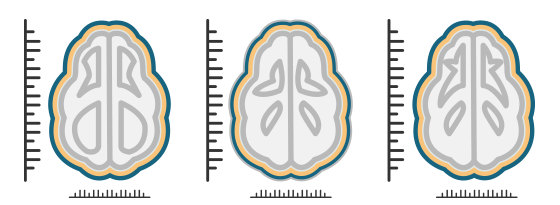Understanding multiple sclerosis
:quality(90)/)
Multiple sclerosis (MS) is a disease of the central nervous system (CNS), which includes the brain, spinal cord and optic nerves. It is usually thought of as a single disease, but its course and symptoms vary from person to person.
Who gets MS?
Multiple sclerosis is a leading cause of non-traumatic disability for young people.¹,²
MS is twice as likely in women than men2
MS is commonly diagnosed between the ages of 20 and 403
Approximately 2.3 million or 1 in 3,000²
people in the world have MS

Approximately 1 in 710 people in North America have MS2
Approximately 1 in 925 people in Europe have MS2
MS prevalence is highest in countries furthest from the equator4
Approximately 1 in 1050 people in Australia have MS2
Symptoms can affect nearly every part of the body and the mind
People with MS can experience many types of symptoms.5
90%
Up to 90% of people with MS experience fatigue6
50%
Within 15 years of onset, more than 50% of people with MS have difficulty walking5,7,8
20%
Vision difficulties are common, and a first symptom in 15-20% of people with MS9
80%
At least 80% of people with MS experience bladder issues10
2x
Depression is approximately 2x more likely in people with MS11
2x
Sleep problems are twice as likely in people with MS12
MS has different disease courses
MS is categorised into courses based on how the disease generally behaves and whether or not there is disease activity and a steady increase in disability over time.
For explanation of disease courses, please visit the National Multiple Sclerosis Society 13
RRMS
Relapsing-remitting MS
SPMS
Secondary progressive MS
PPMS
Primary progressive MS
Disease activity can be measured
No matter what course of MS a person has, relapsing or progressive forms of MS may be active or inactive at different points in time.14 Disease activity may be outwardly apparent with new or worsening signs or symptoms. There can also be underlying disease activity that is detected with special equipment like magnetic resonance imaging (MRI).
More is being done
There is no cure for MS, but research continues to better understand and treat the disease.5




References
Murray TJ. (2006). Diagnosis and treatment of multiple sclerosis. BMJ, 322 (7540):525-527.
Multiple Sclerosis International Federation. (2013). Atlas of MS 2013. Available at: http://www.msif.org/about-us/advocacy/atlas/.
MS International Federation. What is MS? Available at http://www.msif.org/about-ms/what-is-ms/.
Simpson S, et al. (2011) Latitude is significantly associated with the prevalence of multiple sclerosis: a meta-analysis. J Neurol Neurosurg Psychiatry, 82(10):1132-1141.
National Institutes of Health-National Institute of Neurological Disorders and Stroke. (2015). Multiple Sclerosis: Hope Through Research. Available at: https://www.ninds.nih.gov/Disorders/Patient-Caregiver-Education/Hope-Through-Research/Multiple-Sclerosis-Hope-Through-Research.
Hemmett L, et al. (2004) What drives quality of life in multiple sclerosis? QJM, 97(10):671–6.
Souza A, et al. (2010) Multiple sclerosis and mobility-related assistive technology: systematic review of the literature. J Rehabil Res Dev, 47:213–223.
National Multiple Sclerosis Society. (2010). Gait or Walking Problems. Available at: http://www.nationalmssociety.org/NationalMSSociety/media/MSNationalFiles/Brochures/Brochure-Gait-or-Walking-Problems.pdf.
United States Department of Veterans Affairs. Visual Dysfunction in Multiple Sclerosis. Available at: http://www.va.gov/MS/Veterans/symptom_management/Visual_Dysfunction_in_Multiple_Sclerosis.asp.
National Multiple Sclerosis Society. Bladder Problems. Available at: http://www.nationalmssociety.org/Symptoms-Diagnosis/MS-Symptoms/Bladder-Dysfunction/
Siegert RJ, Abernethy DA. (2005). Depression in multiple sclerosis: a review. J Neurol Neurosurg Psychiatry, 76:469–475.
Lobentanz IS, et al. (2004). Factors influencing quality of life in multiple sclerosis patients: Disability, depressive mood, fatigue and sleep quality. Acta Neurologica Scandinavica, 110:6–13.
National Multiple Sclerosis Society. Types of MS. Available at http://www.nationalmssociety.org/What-is-MS/Types-of-MS.
Lublin F.D. et al. (2014). Defining the clinical course of multiple sclerosis. Neurology, 83(3),278-86.
National Multiple Sclerosis Society. Managing Relapses. Available at: http://www.nationalmssociety.org/Treating-MS/Managing-Relapses.
Erbayat A, et al. (2013). Reliability of classifying multiple sclerosis disease activity using magnetic resonance imaging in a multiple sclerosis clinic. JAMA Neurol, 70(3):338-44.
:quality(90)/)
:quality(90)/)
:quality(90)/)